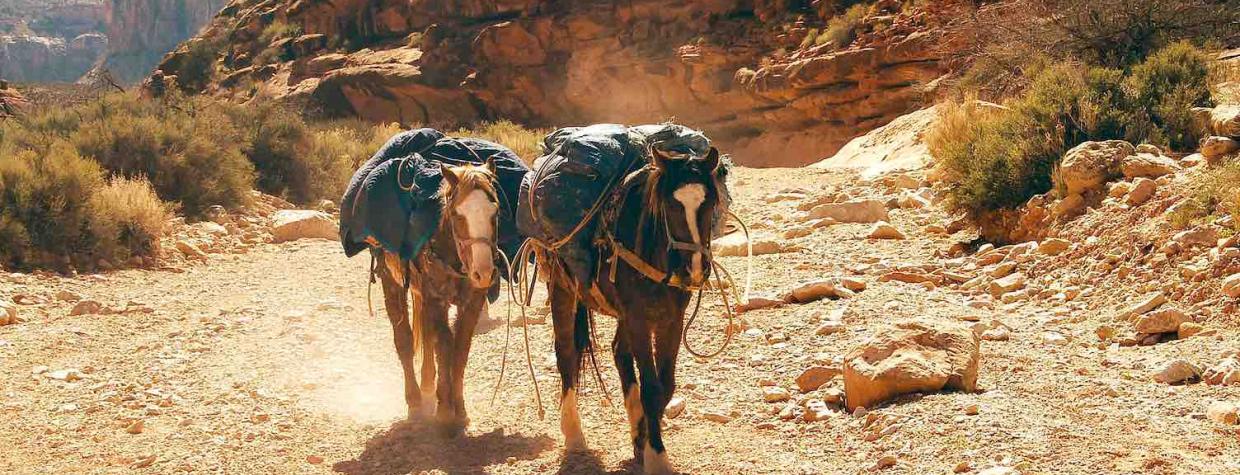Cradled by the bold red cliffs of the Grand Canyon is the isolated village of Supai, where thousands of eager travelers pass by every year to reach the world-famous blue-green water of Havasu Falls. However, what they often overlook is the village’s lifeline — its mules.
Supai is one of the last indigenous villages in the United States without access to paved roads, and although a helicopter is available to deliver supplies to the village, it’s almost completely sustained by the sweat and vigor of its hardworking animals.
The village can be reached by traveling along an 8-mile trail interlaced with boulders, pools and the breathtaking cliffside views that only the Canyon can offer. The trail is rigorous, and everything that is carried in — food, mail, garbage and the luggage of travelers — must also be carried out.
Carletta Tilousi, a member of the Havasupai Tribal Council, grew up in the village and spoke with Arizona Highways about her tribe’s relationship with its pack animals and how village life has changed due to the area’s rising popularity.
How have things changed in recent years?
Life was really simple when I was growing up, but in the last 30 years, it has completely changed. The tourists are coming in more than ever before. There weren’t nearly as many tourists coming in; now we have about 500 a day. The tribe will need to decide what we can sustain and what we can’t.
Is there a veterinarian in the village, or is there any medical aid available for animals if they get sick or injured on the trails?
We have an animal control officer to respond to any incidents, and they do the evaluation. If we need a veterinarian to come down, we would have them do so. They usually visit the village every three months, and we’re currently scheduled for a spay and neuter for our dogs and cats. Those are usually scheduled ahead of time, and they are all volunteers.
If an animal falls and injures itself in the Canyon, how is that incident usually managed?
From my horse-riding experience, they don’t get injured unless they’re startled, and if they’re not tame, hikers can startle them. The horse has to be really tame to run those trails. If they do get injured, they are assessed, and if they can’t walk, then I believe they are euthanized. I don’t remember any recent cases where we had to do that.
Are there any alternative methods of transportation for visitors?
We have ATV vehicles that are used for emergencies, and they are used to transport elders to and from their houses. If there’s any sign of distress among the tourists, the packers will go out of their way to help them.
Usually the horses are used for travelers, for the tourism industry. There are only a few families that own horses in the village. We also have a helicopter available. A lot of us rely on transportation in and out of the Canyon by helicopter.
If a traveler arrives with a lot of luggage, what would be the most affordable option for transportation?
Oftentimes, they would rather hire a packhorse than carry their equipment in. A lot of them prefer to do that because they take the luggage directly to the campsite. If you take the helicopter, you still have to carry your gear another 2 miles from the village to the campsite.
What is done with the animals during the offseason?
Those are personal decisions that a horse owner would make, but oftentimes in the Havasupai culture, they would send them out to the free range for half a year and then bring them down to work during the summer.
How is village life different during the offseason?
Tourists are allowed during the winter, and it’s the best time to visit. I always tell my colleagues that live out of the Canyon, “Don’t visit in the summer; visit in the winter.”
— Isabel Menzel

